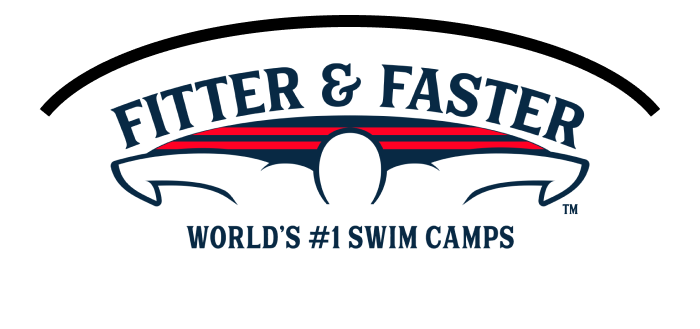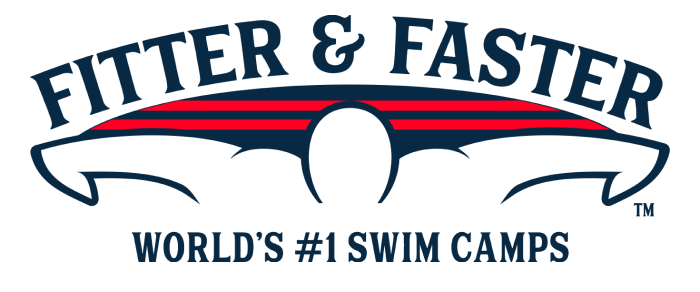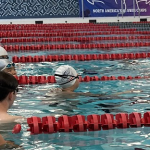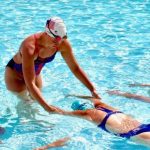Past Clinic: Competitive Enrichment Swim Camp (Ages 7 to 10)
Northwood High School
4515 Portola Parkway,
Irvine,
CA 92620
A description of what was covered at this past clinic is below the upcoming clinics.
Upcoming Swim Clinics and Camps
Within 250 miles of Irvine, CA.
Past Clinic
Introduction
Fitter & Faster is producing a 2-day swim camp and special video filming & analysis session for swimmers ages 7 to 10 years old at Northwood High School in Irvine, California On September 27 & 28, 2025. This exciting and engaging swim camp is designed to help young swimmers build foundational competitive skills, boost their confidence, and foster a lifelong love for swimming. Please see below for additional swim camps in Irvine, CA.
COMPETITIVE ENRICHMENT SWIM CAMP: Starts, Turns, Underwaters & More (Ages 7 to 10)
-> DAY 1 (Saturday, September 27): Going from Dives to Starts
-> DAY 2 (Sunday, September 28): Flip Turns, Open Turns & Finishes
VIDEO FILMING & ANALYSIS
September 27, 2025: Provide your swimmer the opportunity to receive professional video analysis of their stroke, just like the pros. Choose a single registration to have one stroke filmed and analyzed, save with the Camp + Video Bundle, which includes both days of the swim camp along with filming and analysis of all four strokes, or purchase a Video Bundle that includes only the filming and analysis of all four strokes for video sessions.
Click the “Curriculum Menu” below for details on the swim camp and video filming & analysis sessions.
-> Availability in each swim camp is limited to ensure the highest level learning experience.
-> SAVE when you purchase an “Entire Camp Bundle” for your swimmer.
ADDITIONAL SWIM CAMPS IN IRVINE:
-> Ages 13 & Over
-> Ages 10 to 12
Select a curriculum below
STARTS, TURNS, UNDERWATERS & MORE SWIM CAMP: September 27 & September 28, 2025
The momentum generated from explosive starts and turns are the FASTEST that top age group swimmers and elite swimmers are moving in a race! The more efficient, powerful, and hydrodynamic your swimmer is, the more distance they travel in the water before taking their first stroke!
- DAY 1 (Saturday, September 27): GOING FROM DIVES TO STARTS: Transitioning to competitive swimming involves mastering racing starts from the blocks. This Competitive Enrichment clinic is designed to help swimmers elevate their skills by building confidence and transitioning from basic dives to powerful racing starts. Participants will focus on improving their starts, underwater dolphin kicks, and breakouts—the fastest and most efficient part of any race.
- Block Starts: Confidence on the blocks begins with proper setup. Our elite clinicians will teach swimmers how to position their bodies for a stable base, allowing them to remain steady while poised to launch into their start at the sound of the horn.
- Water Entry: A smooth, shallow entry into the water is key to carrying momentum from the blocks into the race. This session emphasizes improving water entry, a crucial skill for maximizing speed and efficiency right from the start.
- Streamline: A proper streamline is the fastest a swimmer can move in the water. Even elite swimmers continually refine this technique. Participants will receive tips to improve their streamline, helping them maximize speed off starts and on every wall during practice and competition.
- Powerful Underwater Dolphin Kicking: Underwater dolphin kicking is a vital skill, with the best swimmers generating equal power on the up and down kicks. Our clinicians will introduce different techniques used by elite swimmers and teach participants how to leverage them for faster starts and walls.
- Breakouts: Breakouts are often a trouble spot, with many swimmers inadvertently creating drag through unnecessary movements. This session will focus on refining breakout timing to maintain momentum and power into each lap.
- DAY 2 (Sunday, September 28): FLIP TURNS, OPEN TURNS & FINISHES: For developing competitive swimmers, mastering turns and finishes is a critical step toward transitioning from simply swimming to racing. While proper turn technique is vital, the process begins well before reaching the wall and the impact of a great push off will carry speed through the next length. Similarly, a well-executed finish can make the difference in close races, with the preparation for a great finish beginning far before the final touch.
- Flip Turns: Racing flip turns require precise technique. Swimmers must drop their head quickly without pausing, keep their hands narrow during the rotation, and finish with foot placement and body position that allow for a powerful push-off. Our clinicians will teach swimmers how to turn for maximum speed and efficiency.
- Open Turns: Open turns often require swimmers to re-learn technique. Instead of turning to the side, swimmers will practice bringing their knees and feet straight to the wall, almost like a backflip. They’ll also learn to stay low in the water and use smooth arm movements that lead to optimal foot placement and streamlined push-offs.
- Momentum Off the Wall: The push-off is the fastest part of each length, and carrying that speed into swimming strokes is essential. This clinic will teach proper push-off positioning and tight streamlines to maintain speed.
- Maintaining Speed: One key to both great turns and finishes is maintaining or even increasing speed in the final five yards. Swimmers will develop the habit of “swimming through the wall,” ensuring they carry speed from the flags to the wall and come out ahead in races.
- Finishes: Strong finishes involve eliminating breaths inside the flags, maintaining stroke length and speed, and touching the wall with force just below the surface. Our clinicians will help swimmers build these habits to consistently deliver competitive finishes.
VIDEO FILMING & ANALYSIS: September 27, 2025
Since so much of the stroke happens underwater, it is incredibly important to see what’s going on below the surface! Small adjustments to your stroke can lead to big time drops! This is your opportunity to get beautiful footage of your stroke and get analysis from an expert…and you can review with your coach as well!
- YOUR ELITE STROKE ANALYZER: Coach Colby spent 13 years working with America's top swimmers and coaches at USA Swimming Championship meets. He provided them with feedback and detailed video analysis of strokes and races. Now, he will do it for you!
- ANALYSIS: Our Fitter and Faster expert will use a video analysis application to record their comments on your technique. They will use slow motion, pause the video at specific points, and draw on the swimmer's video, all while explaining where opportunities for improvement are. Each stroke will have approximately 3 to 5 minutes of expert commentary that you can review with your coaches at home!
- DRILL RECOMMENDATIONS: You will receive recommendations for drills to correct the technique of each swimmer.
- SIGN UP: Select to have one stroke filmed. Or, SAVE by choosing to have all four strokes filmed. The "multi-stroke options" are for individual swimmers and cannot be split.
- ARRIVING AT THE POOL (Retain your order number): You will receive an e-mail approximately one week before the filming session with the specific time for your swimmer to check in, warm up, and be filmed. Please retain your order number - this is how swimmers will be identified on that schedule. When you arrive at the pool, you will be greeted by Fitter & Faster staff who will provide you instructions on the filming process.
- WARM UP: Participants will have an opportunity to warm up before filming.
- FILMING: Our camera operator will have you swim two 25s at a strong pace of each stroke purchased (1 stroke or all 4 strokes). The filming of each stroke will take about three minutes. The video will capture a side angle and a front angle below the water to get an accurate view of your technique.
- SESSION LEGNTH: Depending on the number of strokes you are getting recorded, your session time will run between 5 and 15 minutes.
- TIMELINE: All videos will be analyzed and returned within 14 days of the camp. The analyzed videos along with the original video will be sent via email for you to keep!
START TIMES FOR BOTH DAYS:
- Check in 9 AM. Camp: 9:15-11:45 AM
- Depending on the number of strokes you are getting recorded, your session time will run between 5 and 15 minutes.
- You will receive an email a week before the filming session with the specific time for your swimmer to check in, warm up, and be filmed.
- These sessions are separate from our swim camps. Signing up for a swim camp on its own does not include video filming and analysis unless you purchase a bundle.
- SEPTEMBER 27: Swimmer's scheduled time will be between 4-6:30 PM.
- Elite Video Filming & Analysis is for ALL swimmers ages 7 & Over
ASK QUESTIONS
Swimmers and parents are invited to ask the clinicians questions during a Q&A session. Gain insight into their training regimen, diet and nutrition, and recovery tactics.
WATCH THE CLINICIANS
Observe clinicians swim at full speed and demonstrate a progression of perfectly executed drills to achieve powerful, efficient, and fast swimming.
PUT YOUR SKILLS TO THE TEST
Throughout the camp, swimmers will practice what they've learned with some of the world's most elite Swimmer Clinicians and coaches!
Take a photo, get autographs, and chat with your clinicians!
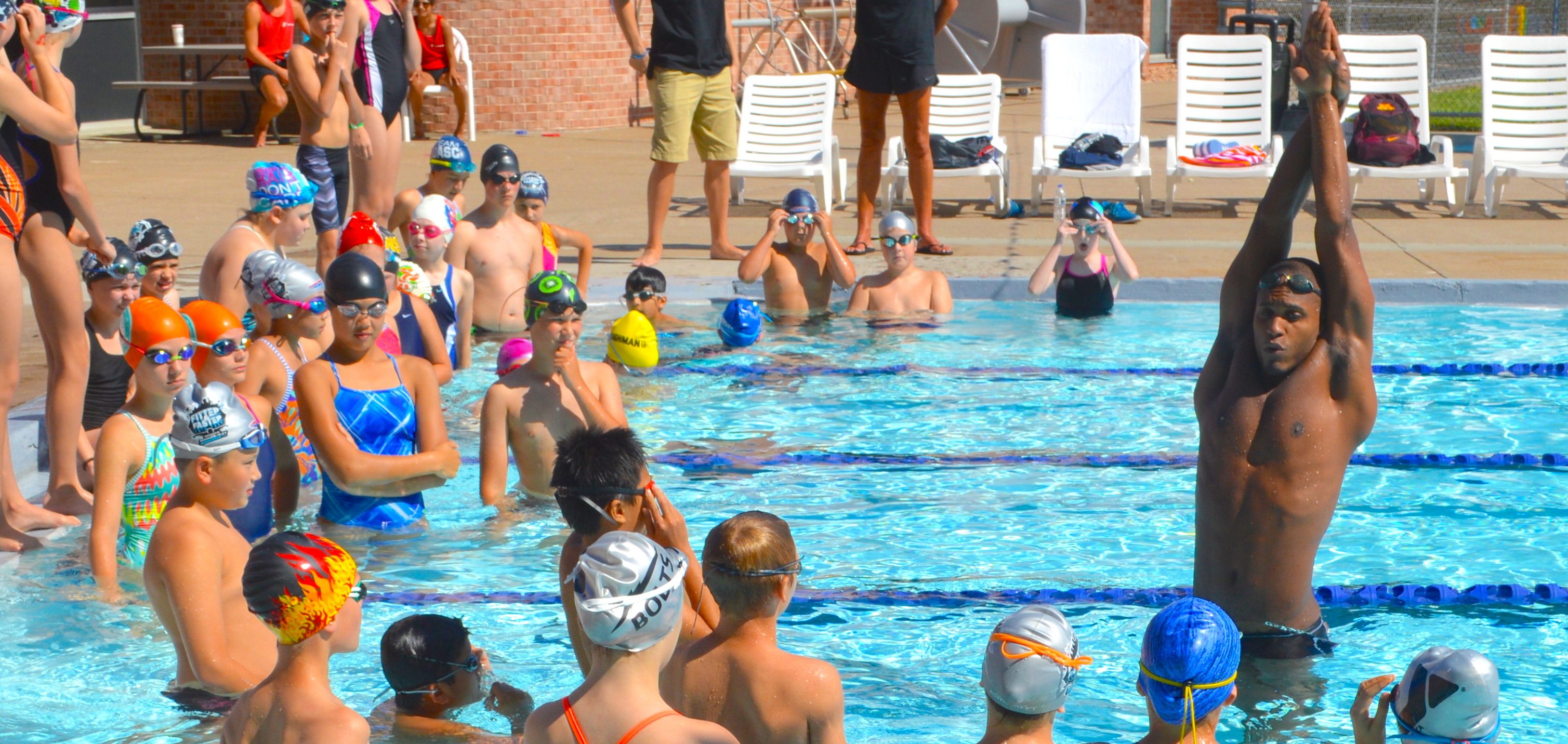
Giles Smith
Giles Smith is a National Champion and Pan American Games gold medalist. He is known for his precision of technique especially towards the end of races when his competitors are fatiguing. Learn how to achieve AND maintain fast and efficient swimming all the time by learning from Giles Smith!
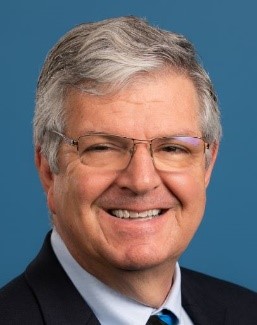
Scott Colby
Scott Colby is a former Performance Development Advisor for USA Swimming, where he spent thirteen years interacting with athletes and coaches at USA Swimming Championship meets providing feedback and detailed video analysis of strokes and races. He says, “A lot of times it’s not obvious what problem a swimmer may be having until you analyze video of their stroke. Given that opportunity, you may be able to see and fix something that makes the athlete more efficient in the water.” He goes on to say that video analysis is not about training volume over time, but about “one or two things you can do tomorrow to get faster.”
Inquisitive, Educated Swimmers are Faster Swimmers! Sign up today!
Search all of our clinics...or request a clinic in your area


